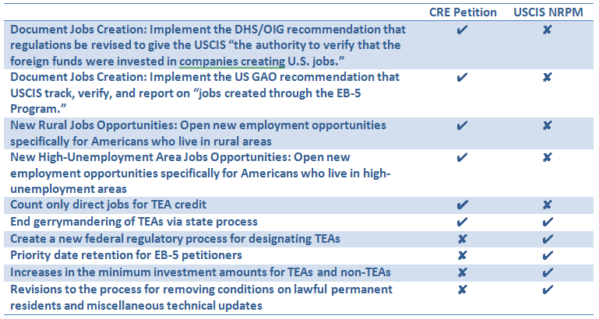CRE’s EB-5 Modernization Petition Compared with USCIS’s Proposed Rule: Regulation Removal and Job Creation versus Regulation Creation and Job Removal

Creating Jobs for American Living in Rural and High Unemployment Areas
CRE’s petition seeks to unleash the job-creating power of the EB-5 program through a literal reading of the underlying statute.
The law requires that EB-5 applicants taking advantage of the Target Employment Area (TEA) provisions of the program create jobs in rural and high unemployment areas. CRE proposes that DHS implement this provision by requiring that only direct jobs documented as being held by people living in rural and high unemployment areas count in assessing whether a project qualifies for TEA benefits.
Ending Gerrymandering via Market Forces, Not More Regulation
CRE’s petition would allow investors unlimited flexibility in locating new TEA enterprises provided that the project documents hiring the requisite number of people who live in rural and high unemployment areas.
USCIS’s Proposed Rule would create a new federal regulatory process for determining TEAs. CRE’s petition, by contrast, would end the current, state-based gerrymandered TEA identification process by ending the federal regulations which lead to gerrymandering in the first place.
In Summary
- USCIS’s Proposed Rule would create a new federal regulatory regime to remedy a gerrymandering problem created by existing regulations.
- CRE’s petition would solve the gerrymandering problem by terminating the trouble-causing regulations and by adhering scrupulously to statutory requirements.